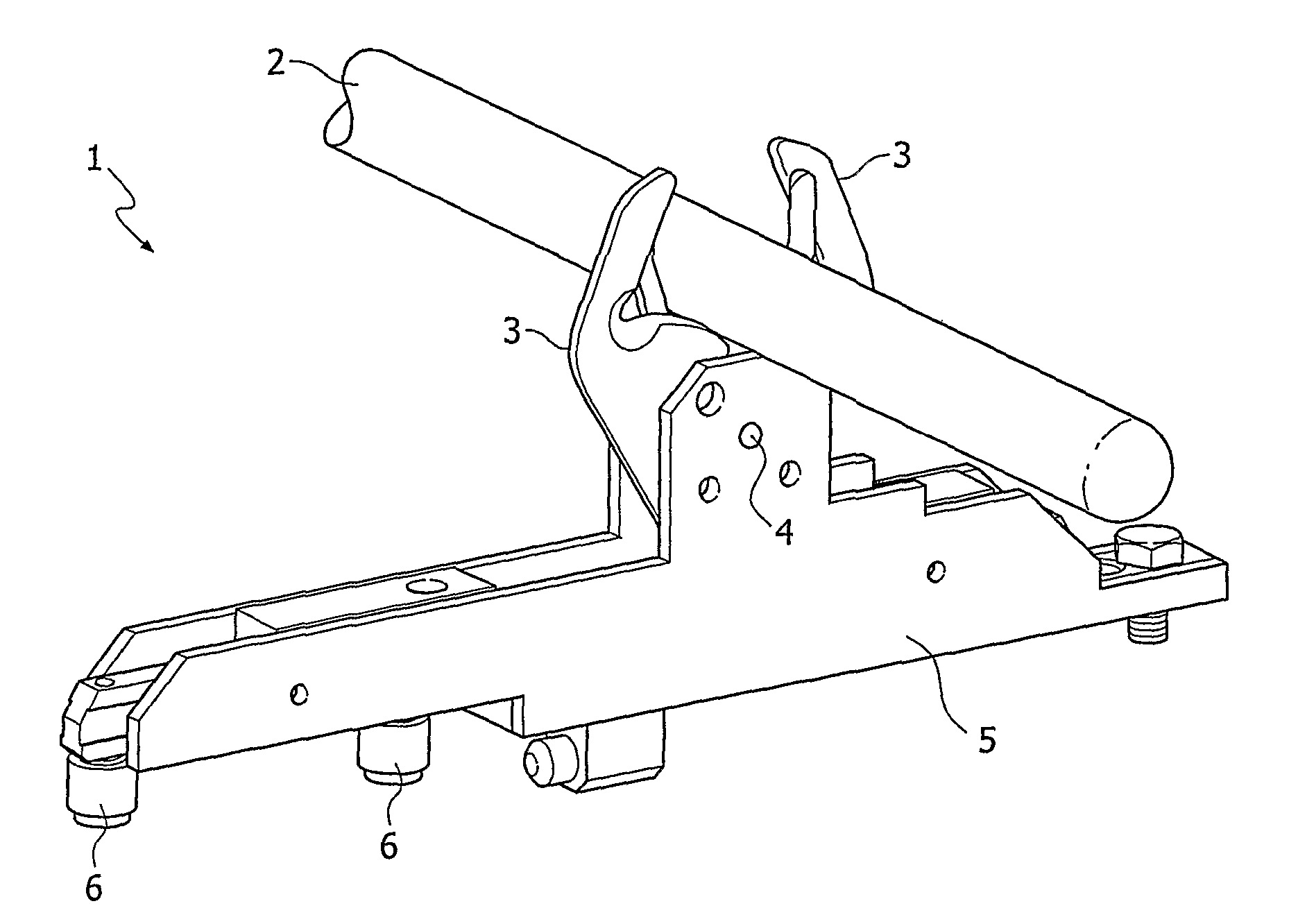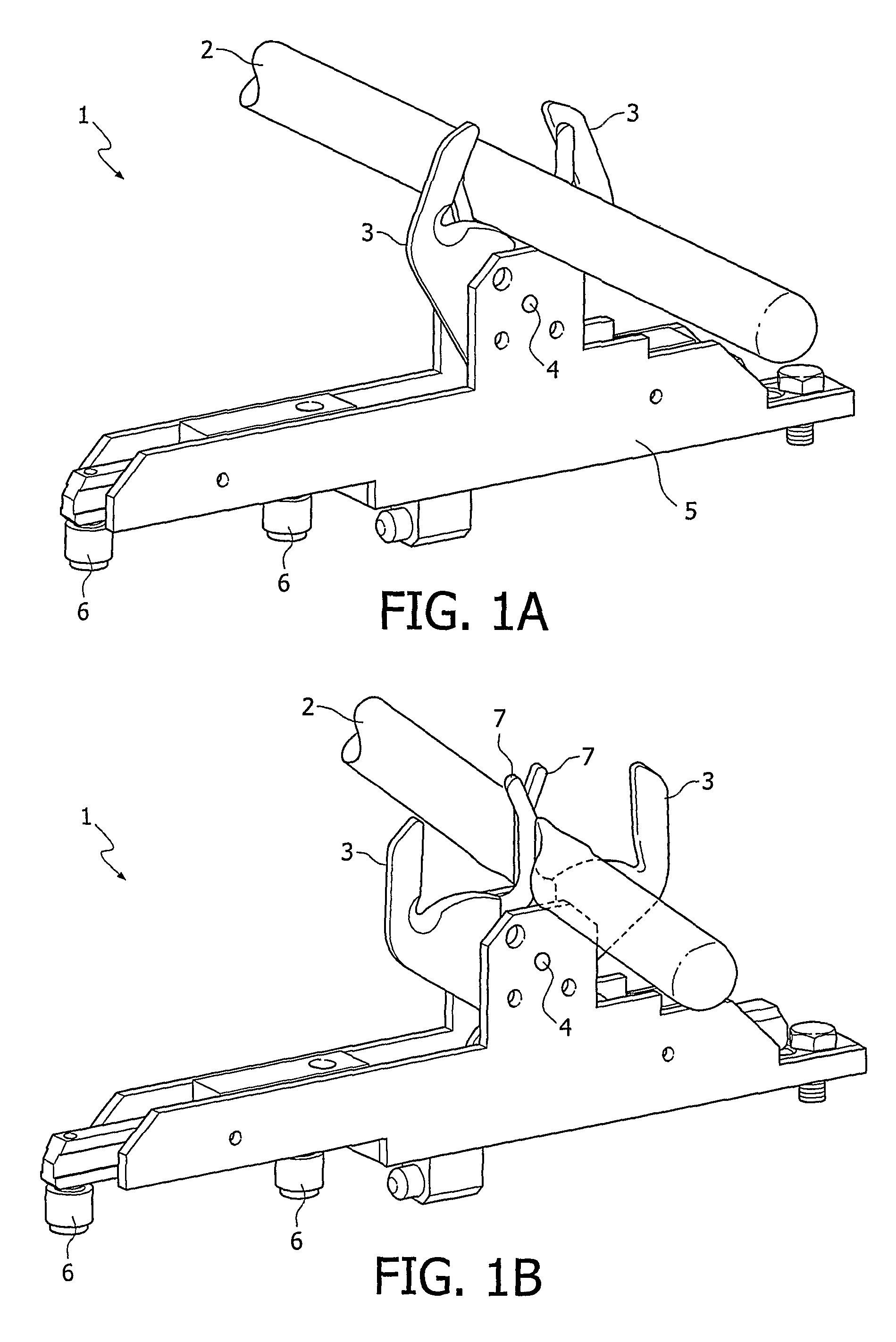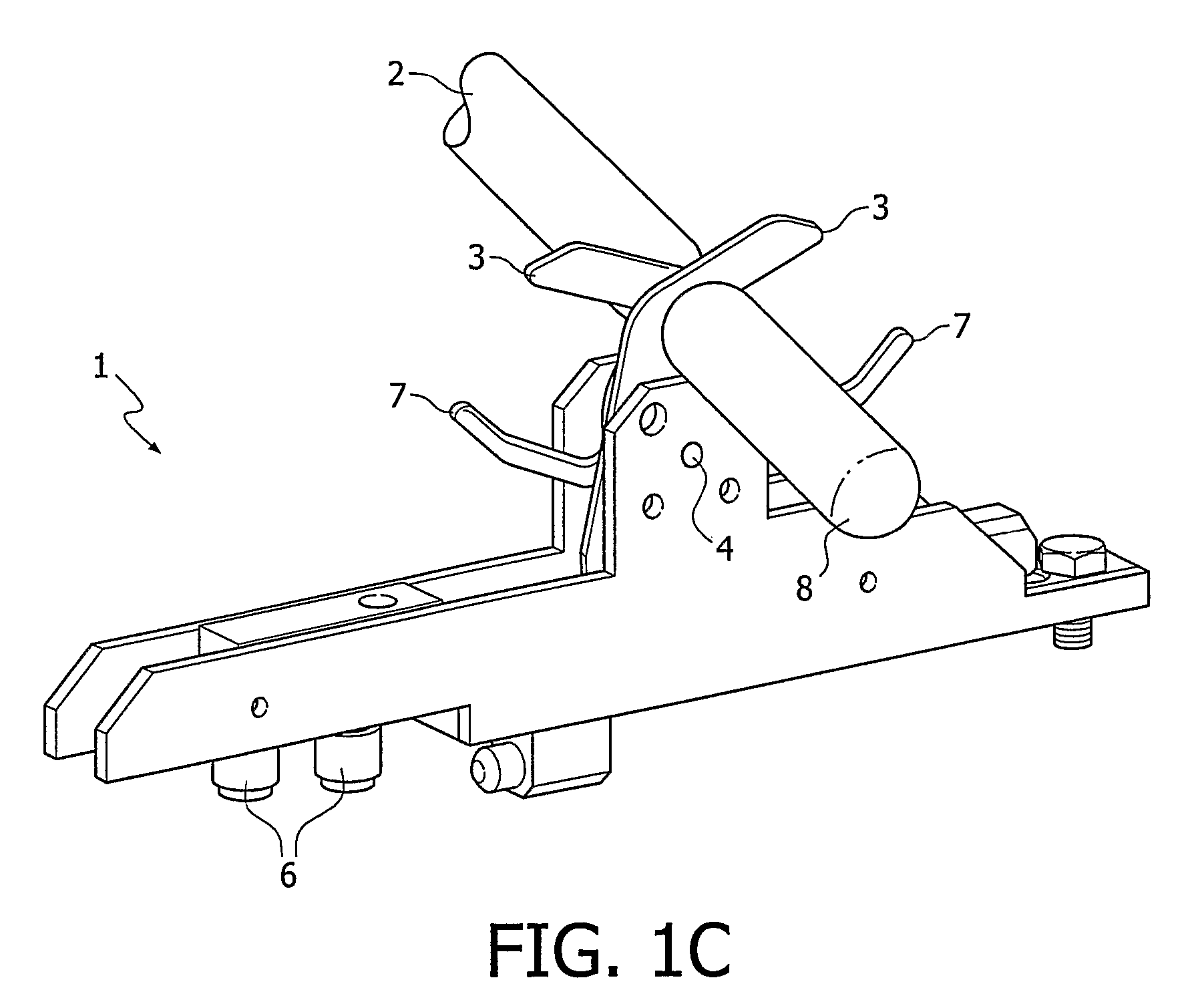Method for phased separation of a sausage strand, separating element and assembly of separating elements
- Summary
- Abstract
- Description
- Claims
- Application Information
AI Technical Summary
Benefits of technology
Problems solved by technology
Method used
Image
Examples
Embodiment Construction
[0022]FIG. 1A shows a separating element 1 according to the invention which engages round an as yet unprocessed sausage strand 2. For this purpose the cutting members 3 (and the pressing members not shown in this figure) are moved so far apart that they leave sufficient space clear for the passage of sausage strand 2. Cutting members 3 are placed in a holder 5 for pivoting about a shaft 4. Also shown are cam followers 6 which protrude under holder 5 and which are coupled to cutting members 3 and the pressing members for displacement thereof. A first phase of the method for separating the sausage strand 2 is shown in FIG. 1B. Cutting members 3 are pivoted further apart by displacing the cam followers 6. Hereby becoming visible are pressing members 7 which engage on, and locally constrict, the sausage strand 2. It is noted that cutting members 3 are each rigidly coupled in each case to the pressing member 7 situated on the opposite side of sausage strand 2. This will be further elucid...
PUM
 Login to View More
Login to View More Abstract
Description
Claims
Application Information
 Login to View More
Login to View More - R&D
- Intellectual Property
- Life Sciences
- Materials
- Tech Scout
- Unparalleled Data Quality
- Higher Quality Content
- 60% Fewer Hallucinations
Browse by: Latest US Patents, China's latest patents, Technical Efficacy Thesaurus, Application Domain, Technology Topic, Popular Technical Reports.
© 2025 PatSnap. All rights reserved.Legal|Privacy policy|Modern Slavery Act Transparency Statement|Sitemap|About US| Contact US: help@patsnap.com



